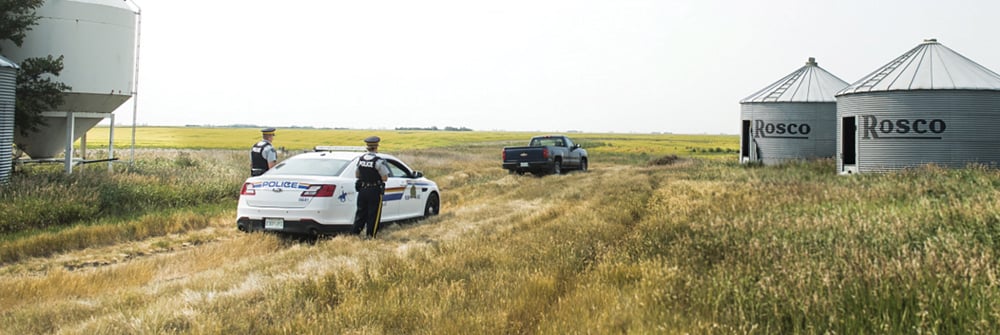The Canadian Centre for Justice Statistics puts Manitoba’s rural crime rate 42 per cent higher than urban areas, although rural areas in the south are much safer
Manitoba’s Progressive Conservatives say they want smarter crime fighting in Manitoba, and they are promising to bolster those efforts if re-elected.
A press release earlier this month promised new crime reduction teams in both western and eastern Manitoba as well as additional officers for the existing northern crime reduction team and two new crime analyst positions. In total, the party promised 12 new officer positions, plus the two analysts. The party pledged $2.8 million for the additions.
Read Also

Manitoba Ag Days 2026 coming up fast
Canada’s largest indoor farm show, Manitoba Ag Days, returns to Brandon’s Keystone Centre Jan. 20-22, 2026. Here’s what to expect this year.
Rural crime rates are on the rise, though the numbers seem to be skewed by the northern parts of the province. Manitoba’s Progressive Conservatives argue more investment in crime reduction teams might help bring those rates back down to earth.
Cliff Cullen, candidate for Spruce Woods and minister of justice leading up to the election, linked the pledge to the province’s existing push for “intelligence-based policing.”
The crime reduction teams would take information gathered by local police, such as crime rates, for analysis, Cullen said. That information would also be fed into a central database for easier access across detachments and municipal police lines. Intelligence would then be fed back to local police to act on.
The PC campaign argues the move would make law enforcement proactive by identifying, analyzing and then tailoring solutions for crime hot spots in rural Manitoba, as well as dovetail with current provincial strategy.
The Pallister government announced its new strategy in May, including crime prevention, targeted resources for serious crimes, technology integration and community engagement.
“A key pillar to that strategy is on intelligence-led policing,” Cullen said. “So the concept is, across the province with the RCMP and municipal police forces, we as a province want to make sure that we have the information and intelligence to make decisions, that we can address particular situations: guns, gangs and these hot spots.”
Cullen’s party also argues that Manitoba’s rural crime rate is 42 per cent higher than its urban crime rate, a number taken from a recent study out of the Canadian Centre for Justice Statistics. The study was based on police reported crimes per capita in 2017 and was released by Statistics Canada this May.
That number, however, may be deceptive as a blanket statement for rural Manitoba.
The report did note that rates of assault, homicide, sexual assaults against children, mischief and disturbing the peace were all higher in rural parts in the Prairies, and Manitoba’s rural crime rate was second only to Saskatchewan out of every province.
A closer look, however, shows a sharp divide between the north and the south. Researchers noted that Manitoba’s sky-high rural crime rate was actually driven by those northern numbers. In fact, the same study found that rural areas in southern Manitoba were safer than cities. The rural crime rate in the south sat just below six crimes per 100 people, compared to just over seven in the region’s urban centres.
In comparison, northern Manitoba reported over 46 crimes per 100 people in urban areas and 31 crimes per 100 people outside of city limits. A greater proportion of the north lives in rural areas, however, the study said, something that skews the urban-rural comparison.
Cullen acknowledged the gap. He pointed to the two promised analysts, as well as a promise to double the northern crime reduction team from four to eight officers.
Cullen pointed to similar programs in Saskatchewan and Alberta, and argued that the northern team has already seen positive results.
“We think that now we can add to that complement for northern Manitoba and, at the same time, we’re looking at expanding that crime reduction enforcement team to the other regions, the other two regions in Manitoba,” he said.
This July, Alberta’s program was credited for a 9.8 per cent rural crime rate drop and 6.1 per cent drop in municipal crime rate, the Calgary Herald reported. The province of Alberta had announced the $10-million program the previous year.
The Manitoba RCMP would not comment on any results from their current crime reduction team, as the matter has become an election issue.
Ralph Groening, president of the Association of Manitoba Municipalities (AMM), compared the AMM’s priority on community safety concerns with its interest in clean water and utilities.
“Public safety is always a major issue,” he said. “We deal, of course, fundamentally with infrastructure and with roads and with water and with waste water but, truly, public safety is primary. That’s what people need. They need to feel safe in the community… Any initiative that makes people feel safer in their community is a good initiative and it is an important priority for AMM.”
Policing is part of that, as well as fire crews and emergency health access, he added.
AMM members have noted more concern with crimes such as breaking and entering and theft, Groening said.
The AMM has historically lobbied for more rural and northern police support, both from the Pallister government and previous NDP government. The Federation of Canadian Municipalities, the AMM’s federal counterpart, has found that municipal police costs almost doubled in the 20 years between 1999 and 2009, and that municipalities bear 60 per cent of that cost, the provincial organization says.
The AMM has a current resolution out of western Manitoba calling for more provincial support on public safety, according to Groening.
“I think the PC announcement would begin to answer some of those concerns,” he said.
The NDP did not respond to requests for an interview.
















